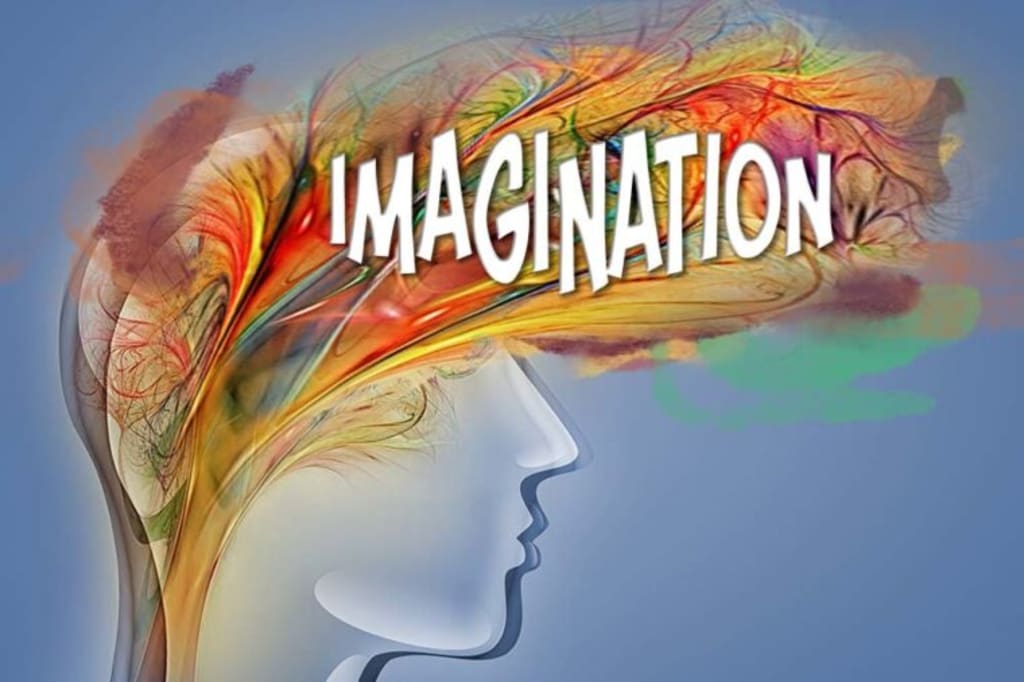Imagination constrained, imagination constructed.
Imagination

What conditions must be met for a mental imagery course to be epistemically or practically effective is a question posed by a number of authors. The contrast between courses of imagination that are realistic and those that are fantastic is the topic of this essay. One theory, put forth by current literature on the usefulness of imagery, maintains that a course of imagination can only represent reality if and to the extent that the course of events it depicts complies with certain established norms. It will be argued against this that the restrictions cannot be both lenient and stringent enough. An alternate strategy includes the construction of realistic courses of imagination in line with certain methods on the basis of recalled impressions as a necessary requirement.
1. Using imagination
We frequently base our decisions on our visual imaginations. Without needing to measure every component, an expert bird house builder may create a reasonably excellent bird house by envisioning the pieces she needs and cutting them to size accordingly. I can picture hopping over puddles on the route that aren't too wide if I encounter them.If I need to create enough lemonade to fill six glasses, I strive to make enough in the pitcher to fill all six glasses in my mind. When playing pool, a player imagines striking the cue ball with the cue so that the cue ball strikes the target ball and the target ball rolls into a pocket. He then tries to act in accordance with his imagined scenario.
We must be able to discriminate between courses of imagination depicting courses of action that will work and courses of imagination representing courses of action that will not work in order to use our visual imaginations to solve problems in these ways. The bird home creator must be able to tell if the roof she envisions is too small for the remainder of the bird house. I need to be able to recognise when my imagination is inaccurate, such as when I make only enough lemonade for six glasses but picture it filling 10.
So instead of asking "What is the difference between useful courses of imagination and useless ones?" we can ask "What is the difference between realistic courses of imagination and fantastic courses of imagination?" According to this logic, picturing filling 10 glasses with the lemonade in the pitcher is great, while picturing filling six glasses can be feasible.
Because there will be realistic courses of imagination that we don't need, this distinction will be different from the one between useful and useless courses of imagination.It might be believable if I picture a shepherd shearing a sheep. It would be amazing if I could picture a sheep being sheared by another sheep.
However, since I don't shear sheep for a living, I have no use for either of those courses of imagination. There may also be types of imagination that we distinguish from fantastical variations and consider to be realistic, however this difference cannot be applied to each human action. While the sole prudential relevance of both of these imaginings may be that they reflect the lava pouring down a mountain, a geologist would distinguish between picturing molten lava flowing down a mountain in a realistic way and picturing it flowing down a mountain in a wonderful way.
Last but not least, I can clarify my goal: It is to critique one type of explanation for the realistic/fantastic divide and to compare it to another type. I want to critique an account of realism that goes something like this: the realistic courses of imagination are those that adhere to specific restrictions. No one who has claimed this has actually developed the theory in any depth, but enough individuals have shown support for the general notion that it will be worthwhile to attempt to formulate it sympathetically and then explain why it is flawed.
The main point of my critique is that the limitations cannot be both liberal enough to allow for the realistic creation of non-closed systems and stringent enough to disallow any possibility.I want to suggest an alternative to the limits theory, which states that realistic courses of imagination must be created in line with specific constructive procedures on the basis of actual perceptual experiences. Although some potential constructive procedures will be discussed, the focus of this presentation will be on programmatic criticism of the account based on limits and promotion of the account based on constructive procedures as a promising alternative.
2. What some people have said
Many authors in recent years have focused on the issue of how mental imagery might be helpful for practical and epistemic objectives. Many of them have said that courses in imagination that adhere to certain restrictions are the most useful.For instance, Amy Kind (2018) wonders how we can use the ability to conjure up mental images to support our opinions. She responds that we can do that to the extent that our beliefs limit our imaginations. Kind's goal is to clarify how acts of imagination might result in beliefs in a way that justifies those views. She uses stories about Nikola Tesla and Temple Grandin to explain how to use mental imaging to solve practical problems, but she believes that the end result of this process is justified belief. Because mental imagery is inherently bound by beliefs, it can produce justified beliefs when used appropriately.
3. What the realistic/fantastic distinction is not
I think the examples in the first part demonstrate that we do distinguish between imaginative courses that are practical and those that are extraordinary. Other than the types of theories I will take into consideration in this paper, I am not aware of any other definitions for it. As we have seen, it is not possible for us to claim that the fantastical courses of imagination are those on which we are not willing to rely and the realistic courses of imagination are those on which we are prepared to rely as a pretheoretical method of making the distinction.
The contrast between realistic and fantastic trains of imagination that I propose to explain is a personal one between what the agent perceives as realistic and fantastic. What is reasonable for an agent may not always be practical for someone with more life experience. But I assume that a realistic train of imagination isn't just one that the agent finds to be such. Instead, a realistic train of imagination for an agent is one that possesses the characteristics that should cause the agent to view it as realistic.
4. The constraints theory, generally formulated
According to the constraints theory, the realistic and fantastical modes of imagination can be distinguished from one another by how closely they adhere to particular restrictions. There are basically two questions that need to be answered in order to further define the limitations theory. First, how are restrictions and compliance to requirements defined? Second, how do limitations and imaginatively realistic paths relate to one another.As was previously said, Kind (2018) views the restrictions as beliefs.
Myers (2021b, 105) specifies a number of different mental states that could serve as "constrainers," but in his examples, the constraints are beliefs, and the constraints that he invokes in his explanation of justification by imagination appear to have to be beliefs. In order to ensure compliance to generalisations without making them the basis for belief, Langland-Hassan explicitly supports a more flexible definition of his lateral constraints (2016, 71).
5. Against the determinative constraints theory
With my example of the pool player, I can demonstrate how the determinative constraints theory envisions the development of a realistic path of imagination. In order to visualise striking the cue ball with the cue in a specific direction, the pool player first imagines a pool table with pool balls on it in a specific arrangement. The motions of the imagined balls are then controlled by the determinative constraints until the balls are imagined to come to rest.The pool player can then continue the creative episode by planning to envision striking the cue ball from a specific angle while it is in its newly imagined location among the other balls in their newly imagined places. Once more, the deterministic limitations decide the next inventive adventure. so forth. Only those imaginative paths that flow from a beginning intention in conformity with deterministic limits will be considered realistic.
About the Creator
Paramjeet kaur
Hey people! I am my own person and I love blogging because I just love to share the small Stories
Enjoyed the story? Support the Creator.
Subscribe for free to receive all their stories in your feed. You could also pledge your support or give them a one-off tip, letting them know you appreciate their work.






Comments
There are no comments for this story
Be the first to respond and start the conversation.